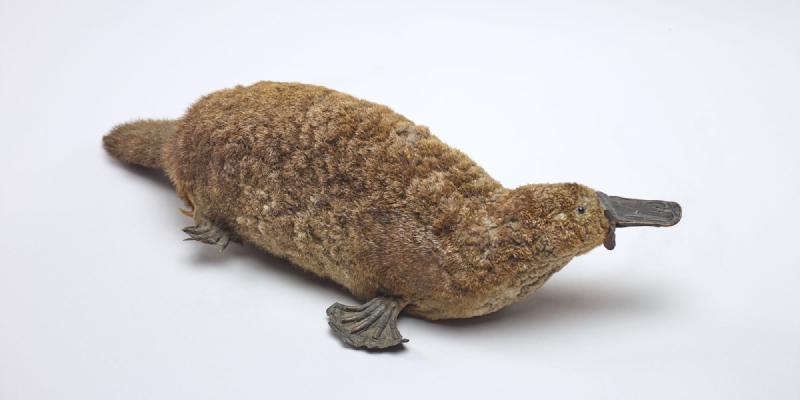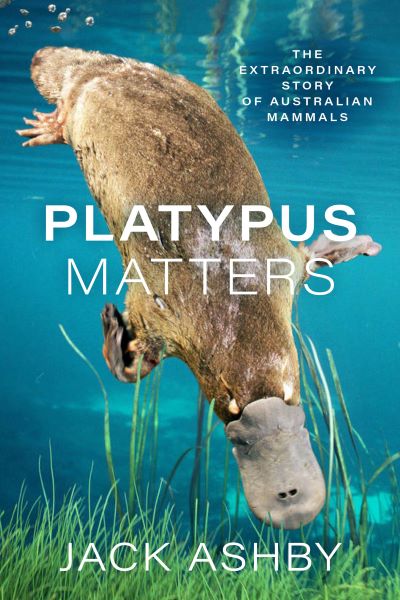Interview with Jack Ashby about his book Platypus Matters. We discuss the history of natural history, and why we should drop the ‘weird’ from ‘weird and wonderful’.
History of natural history
Museum specimens today are the same specimens upon which historical descriptions and theories were based. So we are still being influenced by those representations of animals. Most people doing natural history (in the European sense) were doing their work in Europe, based on dead specimens. Most had never seen them alive in their natural habitat. These scientists wrote about ‘new’ animals based on skins, or specimens preserved in alcohol sent back from abroad. Some of this work was based only on drawings and descriptions. European naturalists or anatomists would use their experience with familiar animals to interpret what they thought these animals would look like in life, feed, and reproduce.
The echidna is an example of how the Eurocentric view produced dramatically incorrect interpretations of how skins or skeletons should look when reconstructed. Echidnas’ back feet face backwards, away from the head, which helps them groom themselves without injuring themselves on their spines. Europeans first encountering skins and skeletons of the echidna had never seen mammals with feet with this structure. So they assumed that the overall appearance would follow the pattern of mammals found in Europe and reconstructed them with the back feet facing forwards. Sometimes going to great lengths to force skins to fit their assumptions, twisting them around, occasionally to the point of tearing the skins and sewing them back together. Most taxidermy echidnas in museums around the world are incorrect representations in this way.
Australian animals challenging established views
Platypuses and Echidnas had features different from other mammals. They don’t have nipples and European naturalists suspected they might not give birth to live young, but lay eggs instead. This challenged the established scientific understanding of how living things were organized.
These animals also provided evidence for evolution. Egg laying was interpreted as a reptilian feature. Lactating was seen as a mammalian feature. Animals that have both of these features could be interpreted as transitional forms, or evidence that it is possible to have transitional forms between reptiles and mammals.
Proving to European scholars that the platypus laid eggs, something Aboriginal Australians knew already, led to the collection of thousands of platypuses in order to find one with a developing egg within its body.
Related reading
Discovered: 150-year-old platypus and echidna specimens that proved some mammals lay eggs - University of Cambridge
Tasting Platypus Milk: Linking Specimens and Stories - Biodiversity Heritage Library
Victorian and earlier values in talking about evolution
‘Primative’ animals
No living species is ‘primitive’ All living species, so far as we know at the moment, are descended from a single ancestor. Species today have all been evolving and adapting to their changing environments for equally long.
‘Primitive’ is sometimes used to refer to traits which appeared in the fossil record for a group of animals a long time ago. Egg laying in platypuses is sometimes referred to as a ‘primitive’ trait because it is something which was present in the earlier reptilian ancestors of mammals. Most mammals have lost this trait, internally gestating and giving birth instead. But the monotremes have retained egg laying. When a species has a lot of traits which have been retained for a very long period, they are sometimes referred to as being ‘primitive’ or ‘living fossils’.
Primitive traits don’t really have solid technical definition and it is often used in a very biassed fashion. Having legs, for example, is a trait with a very long evolutionary history in mammals, but it isn’t thought of as a primitive trait. This is despite some mammals more recently having lost/changed their legs into flippers (whales and dolphins). If this is one of the more recent developments in mammal evolution, why is retaining legs not thought of as being primitive? Perhaps because it is a trait that we humans have, and we write about nature from our perspective.
Consequences of biased views and thinking of evolution as hierarchical
Acclimatisation societies worked to introduce European species into the colonies. In some cases this was because it was felt that the native fauna were essentially not good enough game for hunting, or otherwise inferior to European animals. At the same time these native species were felt to be threats to the ‘better’ European animals. The thylacine, or Tasmanian tiger, is an excellent case study of how contradictory views were used to justify the eradication of a species.
Related reading
Nee, S. The great chain of being. Nature 435, 429 (2005). https://doi.org/10.1038/435429a
Heather J. Aslin & David H. Bennett (2000): Wildlife and world views: Australian attitudes toward wildlife, Human Dimensions of Wildlife: An International Journal, 5:2, 15-35. http://dx.doi.org/10.1080/10871200009359177
Vicious Beast to Victim: Folklore of the Tasmanian Tiger - Vocal.media
“Overspecialised animals”
It becomes easier to think of the declines in species like the platypus, or so called ‘living fossils’ like the coelacanth, to be due to their ‘primitive’ traits making them unable to compete with more ‘modern’ or evolved species.
A related line of thinking is that specialist animals are less adaptable than generalist species. So when their populations decline, because of human actions which change landscapes and ecosystems, they are their own enemy. Shifting blame from humans to the animals themselves.
Related reading
Federico Morelli, Yanina Benedetti, Corey T. Callaghan, (2020) Ecological specialization and population trends in European breeding birds, Global Ecology and Conservation
The history of collecting and its impacts
Parachute science
Parachute science falls to earth - Nature
The Problem With ‘Parachute Science’ - Science Friday podcast
Framework for collecting today
Convention on biological diversity
Nagoya protocol on access and benefit sharing
Case study - The Moustached kingfisher
Moustached kingfisher photographed for the first time - Audubon
Why I Collected a Moustached Kingfisher - Audubon
Importance of Museum collections
Specimens stored in museums are preserved snapshots of natural history. Physical collections can be particularly valuable because they can be tested and re-tested with new technologies, bringing out information we may not currently be able to imagine. The best current example of this is DNA and genetic information. Collectors who first set up European natural history museums knew nothing about DNA. But today DNA still can be extracted from their specimens and be used to study population diversity and evolution.
Physical specimens can also inadvertently record environmental data that we hadn’t considered in the past. However researchers can be very creative in finding new ways to look at old specimens. Old mosquito collections can sometimes still carry their last blood meals, potentially preserving information about the animals they fed on and the spread of mosquito-transmitted diseases. Bird specimens can presere air pollution in the form of particulates caught in their feathers.
Related reading
How Museum Collections Advance Knowledge of Human Health - Smithsonian Magazine
What Hundred-Year-Old Birds Tell Us About the Environment - Field Museum

